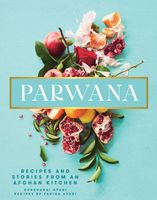Advertisement
History on the menu
Appears in
Published 2020
It is from this long and intertwined history that the cuisine of Afghanistan and the culture surrounding it emerged. Alongside the emperors, religions and artefacts that crisscrossed the Silk Road into Afghanistan came a panoply of impressive culinary offerings from across the globe. From India came the variety of dahls and the prized spices, so intensely sought after throughout the West, including chillies, turmeric, saffron, cumin, cinnamon, cloves, nutmeg and pepper. These spices, apportioned in delicate amounts, became a mainstay of Afghan cooking – seared daily into meats and curries, and baked into rice dishes and vegetables. Special mixes of four different spices, named chaar masalah and often unique to each household, form the flavour base of sauces and palaws, giving rise to the gentle and fragrant aromas typical of Afghan cooking. From the ancient shared history with Persia came the coriander, mint and other green herbs that are now so prevalent in Afghan cuisine. From China and Mongolia came a tradition of hand-rolled noodles, known as aush, and dumplings, adapted to reflect the milder Afghan palate and stuffed with natively grown vegetables such as gandana. From Turkey and the Middle East came the sweet floral notes of rose water and syrup-drenched nutty desserts.

